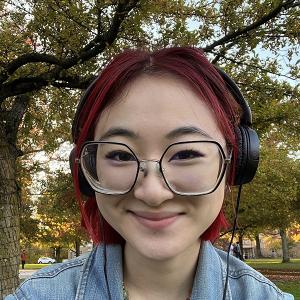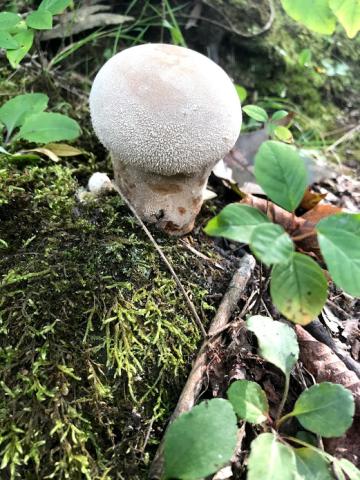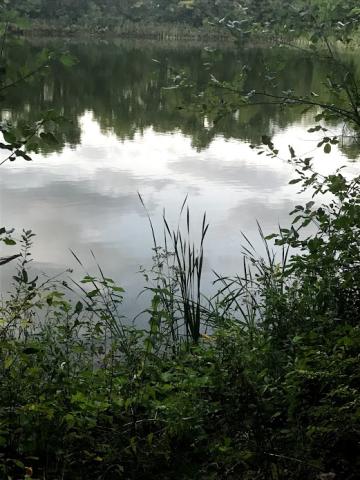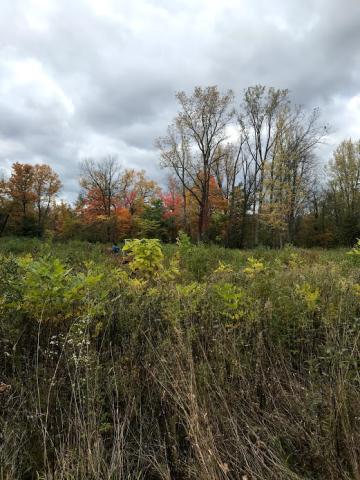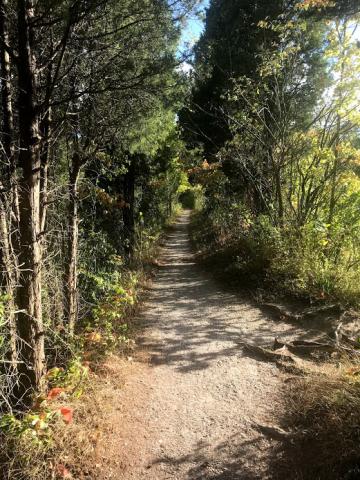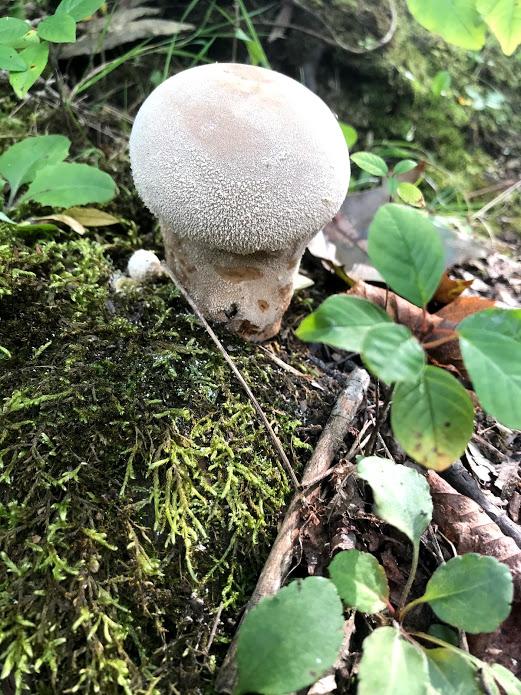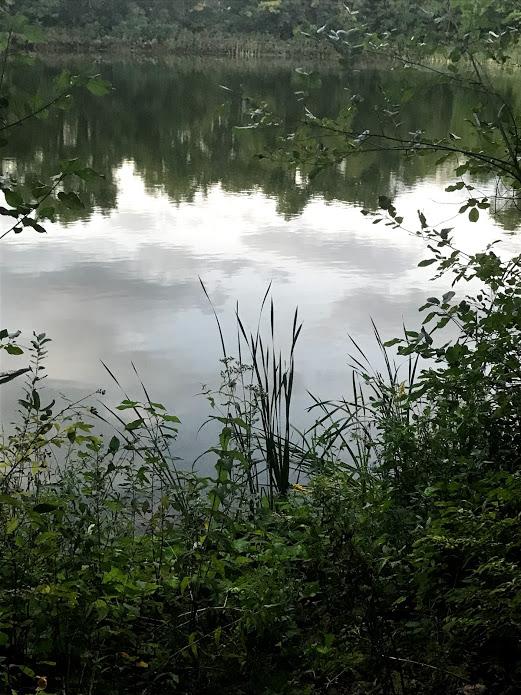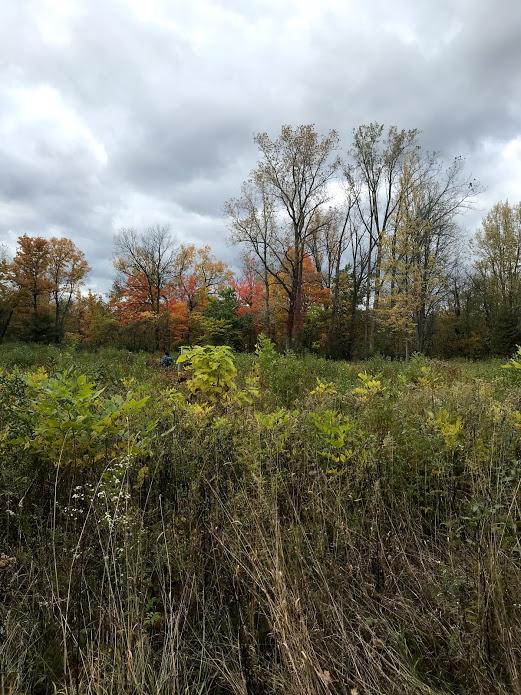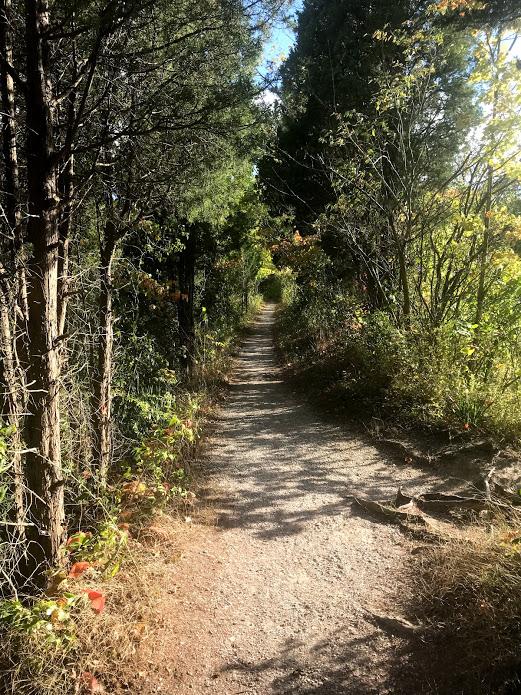Oberlin's arboretum, or the Arb for short, is my happy place. If you've never heard of an arboretum: in this case, it's a forest with some trails going through it, two reservoirs, some grassy space and a mysterious cylindrical stone tower. If I leave a class drenched in social anxiety or academic stress, or if back to back meetings have fried my brain, or if I'm sad on my way back to my dorm, or if I'm content or excited and want to savor it, or sometimes just because I decide to step outside— my legs take me there.
It almost doesn't matter if I actually have the time. More than once a friend has said to me, "I don't have time to go to the Arb," to which I've responded, "I don't have time not to." I would be a worse version of myself if I didn't. I would spend more time frustrated with myself and less time oriented around what I want and need to be doing. Besides, the way that all our little time-telling devices arrange the world for us has no relevance there. Time flows in sun and shadow, in heartbeat and footstep. I walk through the Arb and my breath deepens, my periphery opens up; layers shed from my skin.
If the Arb is my happy place, I am coming to terms with the fact that the Science Center may well be my sad place. If not that, then my disoriented place; if not that, then my annoyed place. The Science Center has this habit of catching me off-guard and helpless, flailing for sense in a maze of cold hallways. Maybe it's the blinding fluorescent lights. Maybe it's a grudge about how I always used to forget it was closed certain hours and on weekends, try to walk through it on my way to everything, and fail. Maybe it's that one homework assignment in ENVS 101 where I learned how much energy the Science Center uses in comparison to every other building on campus. Maybe it's my chem lab session. Maybe it's my chem analysis session. Maybe it's that time the printing website said very clearly that it would send my work forms to the printer in front of my face titled "Chem lab" once I hit submit, then glitched and sent my work forms to the printer in the Art Library, leaving me to sprint across campus praying no one had seen my social security number. (It was fine and this story is incredibly funny to me now.)
The irony of the polarity between these two places is that being an environmental studies (ENVS) major leads me to both the Arb and the Science Center. While I am definitely interested in understanding ecosystems from a scientific perspective, real life STEM classes tend to outrun me, scramble my brain, and leave me panting in the dust. My main focus in environmental studies is more humanities-oriented thinking about the relationship between humans, land, oppression, and non-human beings.
Because so many ENVS majors are in a similar boat, and because you need some baseline level of chemistry to understand ecology, there is an easier chemistry option designed specifically for us. Brilliant! Unfortunately, I didn't know that when I enrolled in Chemistry 101— which, as more than one professor has now heavily implied to me, is a class meant to weed out people who want to be chemistry majors but shouldn't be. Yikes. I hadn't exactly taken high school chemistry, so I didn't exactly feel like I knew any of the words that came out of anyone's mouth in that class, and I couldn't exactly read one chemistry sentence in less than ten minutes. More than that— though I couldn't tell you all the specific reasons for this anymore, I remember ranting to an ENVS friend about how the whole worldview of that class upheld the reductionist, settler colonial and human-egotistical values we were unpacking in our environmental humanities class at the same time. And maybe I was influenced by having recently watched the 2000 film "But I'm A Cheerleader," but I must confess: every time my chem teacher gave the class any kind of instruction at all, a desperate little voice would go off in my head: "But I'm an ENVS major!" During the time I was taking a class in the Science Center— mostly because there was a lot else going on and a lot else to process, but surely in part because I was taking chemistry— my legs took me to the Arb even faster, with even more conviction, and even more often.
I remember at one point seeing some kind of social media post about environmental studies majors classically "going to the arb to 'think' (cry)." I laughed out loud and felt that in my soul. Maybe the Arb is my happy place because it's where I find it easiest to accept unhappy feelings without judging myself for them. When I remember the ways I am connected to the non-human world, I suddenly have no room left in my body for shame. In food, in water, in shelter, in air, my life is literally dependent on millions of vibrant living beings with no concept of politeness or respectability, social constructs or shame. Being in the Arb reminds me that I am a mammal with animal instincts fully intact, with kin beyond who's shaped like me, with support beyond who talks like me. It forces me to zoom out from the chronic thinkingness of academic humanity and let everything else back in. The Arb is my happy place because it teaches me that real joy thrives where there's no reason for it to be faked; the Arb shows me how to delight in my senses, dwell in what I don't yet understand and just be.

